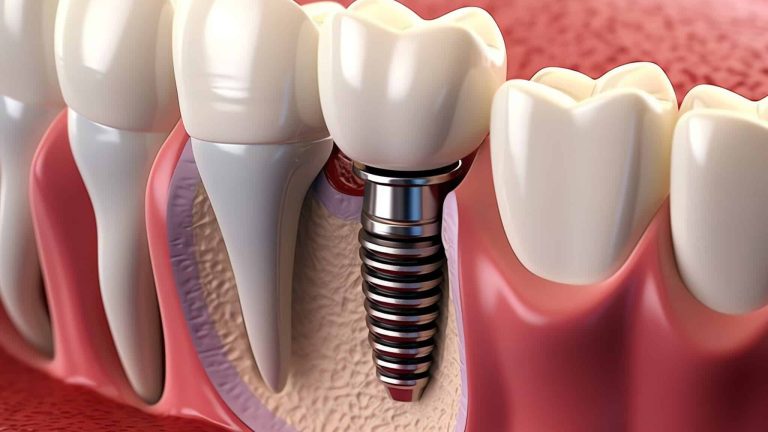Fixed dental prosthesis is a highly effective solution for tooth loss, allowing patients to regain not only masticatory function but also the aesthetics and confidence in their smile. However, before undergoing this treatment, it is important to fully understand the process of placing a fixed prosthesis, from the initial consultation to post-treatment care. This article will explain in detail each of the stages involved, helping patients make informed decisions and feel more prepared for the procedure.
1. What is a Fixed Dental Prosthesis?
A fixed prosthesis is a dental device used to replace one or more missing teeth, restoring both function and appearance. Unlike removable prostheses, which can be taken out by the patient, fixed prostheses are, as the name implies, permanent. They are cemented or screwed to adjacent teeth or dental implants, ensuring greater stability and comfort.
There are several types of fixed prostheses, including:
- Dental crowns: These are used to cover individual teeth that have been damaged or weakened.
- Dental bridges: Used when one or more consecutive teeth are missing. A bridge consists of one or more connected crowns that replace the space left by missing teeth.
- Fixed prostheses on implants: This option involves placing dental implants (artificial roots) onto which crowns or bridges are screwed or cemented.
Now that we understand what they are, let’s take a detailed look at the step-by-step process of placing a fixed prosthesis.
2. Initial Consultation and Evaluation
The process of placing a fixed prosthesis begins with an initial consultation with the dentist. During this first visit, the patient’s oral health is evaluated to determine if they are a good candidate for a fixed prosthesis.
Clinical Examination and X-rays
During this phase, the dentist will perform a thorough examination of the patient’s mouth. This includes a visual inspection of the teeth and gums, as well as taking X-rays or even a CT scan in some cases. These images allow the dentist to assess the condition of the bones and teeth and determine if any additional treatment is needed before placing the prosthesis.
Discussion of Treatment Options
Once the evaluation is complete, the dentist will discuss the different fixed prosthesis options available, such as crowns, bridges, or dental implants. Depending on the condition of the patient’s mouth, some options may be more appropriate than others. Factors such as cost, treatment time, and expected outcomes will also be discussed.
Personalized Treatment Plan
Finally, the dentist will develop a personalized treatment plan based on the patient’s specific needs. This will include the number of necessary visits, any preliminary treatments that need to be performed, and the estimated recovery times between stages.
3. Tooth or Implant Preparation
Once the treatment plan has been agreed upon, the preparation phase begins. Depending on whether the patient is receiving a crown, bridge, or implant-supported prosthesis, the process varies slightly.
Tooth Preparation for Crowns or Bridges
If the patient is receiving a dental crown or bridge, the teeth adjacent to the area being restored must be prepared. This involves removing a small amount of tooth structure to create space for the crown or bridge. This process ensures that the prosthesis fits perfectly and does not interfere with the bite or aesthetic appearance.
The dentist will numb the area with local anesthesia to ensure the procedure is painless. Then, the necessary teeth will be reduced in size so that the prosthesis can be placed effectively. In some cases, if the teeth are severely damaged or weakened, additional treatment, such as a root canal, may be required before placing the crown.
Placement of Dental Implants (If Necessary)
If the patient is receiving an implant-supported prosthesis, the preparation process is more complex. Placing dental implants requires minor surgery in which the implant, a titanium screw, is inserted into the jawbone. This implant acts as an artificial root to support the crown or bridge.
Dental implant surgery is performed under local anesthesia, and in some cases, a bone graft may be necessary if the patient does not have enough bone in the jaw to support the implant. After placing the implant, a healing period is required, which can last several months, during which the jawbone will fuse with the implant in a process known as osseointegration.
4. Taking Impressions and Creating the Prosthesis
Once the teeth have been prepared or the implants placed, the next step is to take impressions of the patient’s mouth. These impressions are used to create a custom prosthesis that will fit the patient’s mouth perfectly.
Digital or Traditional Impressions
The dentist may use traditional impression material (usually a silicone compound) or digital scanning technology to obtain an exact mold of the patient’s mouth. Digital impressions are increasingly common due to their precision and speed, and they can be sent directly to the dental laboratory where the prosthesis will be made.
Temporary Prosthesis
While the final prosthesis is being fabricated, the dentist will place a temporary prosthesis in the patient’s mouth. This temporary prosthesis, usually made of acrylic resin, will protect the prepared teeth and allow the patient to eat and speak normally while waiting for the permanent prosthesis. It is important to note that temporary prostheses are not as durable as permanent ones, so certain recommendations from the dentist should be followed to avoid damaging the temporary restoration.
5. Fitting and Adjustments of the Fixed Prosthesis
Once the fixed prosthesis is ready, the patient will return to the office for a fitting and adjustment appointment. This is a crucial phase of the process, as it ensures that the prosthesis fits perfectly and functions correctly.
Fitting the Prosthesis
The dentist will place the prosthesis in the patient’s mouth and check the fit. Both the bite and contact with adjacent teeth will be evaluated to ensure that the prosthesis does not interfere with masticatory function or cause discomfort. At this point, the patient can provide feedback on the comfort of the prosthesis and whether they feel any unusual pressure or discomfort.
Adjustments
If necessary, the dentist will make minor adjustments to the prosthesis to improve its fit and comfort. This step is especially important in the case of bridges or implant-supported prostheses, as an ill-fitting prosthesis can cause future problems such as jaw pain or premature wear of adjacent teeth.
6. Cementing or Fixing the Prosthesis
Once the prosthesis has been correctly adjusted and both the patient and dentist are satisfied with the result, it will be permanently fixed.
Cementing Crowns and Bridges
In the case of crowns and bridges, the dentist will use a special dental cement to bond the prosthesis to the prepared teeth. The cement will be carefully applied inside the crown or bridge, and then placed over the prepared tooth or teeth. The dentist will apply pressure to ensure that the prosthesis fits perfectly, and then remove any excess cement.
Once the cement has hardened, the prosthesis will be firmly bonded, and the patient can begin using it immediately.
Fixing Implant-Supported Prostheses
If the patient has received dental implants, the prosthesis (whether a crown or a bridge) will be attached to the implants with screws or cement, depending on the type of restoration. Screw-retained prostheses can be removed if necessary, while cemented ones are permanent. The dentist will ensure that the prosthesis is securely fixed and that there is no movement or play in the bite.
7. Post-Treatment Care and Follow-Up
After the fixed prosthesis has been placed, it is essential to follow certain care guidelines to ensure its longevity and the patient’s well-being.
Oral Hygiene
Although the fixed prosthesis cannot develop cavities, it is essential to maintain good oral hygiene to protect the gums and adjacent teeth. It is recommended to brush at least twice a day with a soft toothbrush and use dental floss or interdental brushes to clean around the prosthesis. In the case of bridges, there are special threads that allow cleaning underneath the restoration.
Regular Check-Ups
It is important to schedule regular check-ups with the dentist to monitor the condition of the prosthesis and overall oral health. During these visits, the dentist will assess whether the prosthesis is still in good condition and perform professional cleanings to prevent plaque and tartar buildup.
Additional Adjustments
Over time, minor adjustments to the prosthesis may be needed, especially in the case of dental implants. The bone and gums may change slightly over the years, which could affect the fit of the prosthesis. The dentist can make these adjustments quickly and easily to ensure that the prosthesis remains comfortable and functional.
Conclusion
The process of placing a fixed dental prosthesis is a detailed and personalized treatment that involves several stages, from the initial evaluation to post-treatment care. Although it may seem like a lengthy procedure, the benefits of a fixed prosthesis—such as stability, durability, and improved quality of life—make it an excellent option for those seeking to restore their smile and dental function. If you are considering a fixed prosthesis, don’t hesitate to schedule a consultation with Clínicas La Guardia, where our team of experts will be happy to guide you through every step of the process and provide a solution tailored to your needs.



